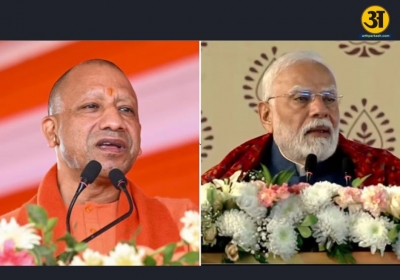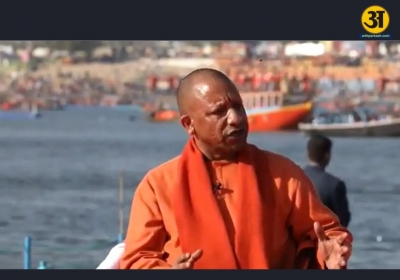
Residents in Thiru Vi Ka Nagar Still suffering after floods
Residents in Thiru Vi Ka Nagar zone are still reeling after the Chennai floods.
In November 2021, the relentless rains brought Chennai and its surrounding areas to a halt. The locals had been suffering greatly as a result of the persistent rains, with many claiming to have gone days without food due to accumulating water in their neighbourhood. Residents from all pockets complained of leeches and centipedes all over their homes as a result of the sewage-mixed rains.
Even though the water has receded three months later, the challenges resulting from the rains' damage are far from resolved. There appears to be no end to the problems, which range from faulty storm water drains and regular power outages to broken roads, inadequate public restroom maintenance, and excessive pollution.
Those in the Greater Chennai Corporation's Thiru Vi Ka Nagar zone, among other places, appear to be the hardest hit. In November, the Perambur Barracks Road in Pattalam, near Puraswalkam, was submerged for more than a week in this zone. Residents claim that the issue, which has been a reoccurring one for years, has not been fixed despite commitments from major parties during the elections.
During the floods, Chief Minister M K Stalin and senior cabinet ministers visited Pulianthope in the Thiru Vi Ka Nagar zone. Residents claim that he and other ministers pledged to enhance the area's infrastructure, but that nothing has been done thus far.
During the rains, Gangamma (56), a sanitation worker for the Chennai Corporation, says the water levels approach her neck.
"During the monsoons, we are unable to live in peace." Children and the elderly are particularly affected, as we have had little to eat for several days. Another important issue is the frequent power outages, which occur even on non-rainy days these days. Our job is hampered every year during the wet season. We are compelled to stay indoors for at least 10-15 days, which has a negative impact on our livelihood," she stated.
"Please help us, do something to drain away the water during the rainy season," Gangamma said in a letter to the administration.
Water cannot be turned off, according to Athilakshmi, who works at the Government Rajaji Hospital. Many people in her neighbourhood, she claimed, haven't worked in a month, and students who have completed Class XII are now working for daily wage jobs because their families can't afford college tuition.
"The Anjaneyar Temple is a landmark in the Pattalam area," she continued. A canal runs behind the temple, and the locals have entirely clogged it by tossing garbage and other objects into it. No one is removing the obstruction. A cloud of dust hangs in the air, and the landscape is littered. The water had risen up to my hip during the November floods, but I had to go to work because I work in the healthcare industry. There were no politicians in our neighbourhood. They had come all the way to the main road and then turned around."
"We struggle during every wet season," Athilakshmi continued. Leaders of the ruling party visit once during the monsoons and distribute bread packets to the inhabitants, thinking their job is done. Because of the rains, I've seen people who have been unable to go to work for nearly a month."
If the monsoons keep folks at home, the summers in many places experience regular power outages. Residents claim that between April and June, at least 10 days per month, the power goes out at 1 a.m. and doesn't come back until around 6 a.m.
"When it rains, the area is inundated with thick black sewage water," Rakesh, who supplies cans of drinking water and resides in the Pulianthope area, said. We've become used to it because we don't have any other choice, but when visitors come to the area, they're surprised and question how we manage to survive in this situation."
"Even if it rains for an hour, the streets become flooded," he added. The firm uses high-powered motors to pump away the water, but the situation remains the same when it rains again. Candidates running for urban local body elections have visited our neighbourhood and pledged to address the concerns, but they will not appear after the election. In the last 10-15 years, we've seen it all."
Ankaiah (74), a retired Madras University superintendent who has lived in the Pulianthope region for over 60 years, said the water level had risen to eight feet during the 2015 floods, and it took the corporation about 15 days to pump out the stagnated water. The water level surged to five feet during the recent rains, he added.
"People who live here should pray to God that no one in their families has a medical emergency during the monsoon since there will be no one to help them if that happens." Nobody can leave the streets, and there are no public transportation options. In all these years, I have no recollection of the government constructing good roads in our area. We noticed in the news that the government has approved a budget of several crores of rupees to give Pulianthope and its environs a facelift, but nothing has been done yet," he remarked.
People do not want to rent properties in the region, according to Govindaraj (62), who worked as a driver for the Chennai Corporation. He also claimed that the stagnated water in the apartment is being diverted to their roads through huge pipes as a result of the construction of a mega apartment in the area, and that because people associated with the apartment have influence with major political parties, the others are unable to question them.
"We're afraid of rain." I used to look forward to the monsoons so that I might appreciate the showers, but I no longer want to see them. The entire stretch from the Hanuman temple appears like a sea on rainy days. During that time, we are unable to attend any functions or visit any locations. Residents get depressed as a result, and their physical and mental health suffers as a result. Dengue fever and other infections make people unwell," he explained.
According to Rajesh, who works at a grocery shop, traffic congestion is a major issue due to the limited roadways, and vehicle pollution poses a health risk. Residents, he said, are expecting that the impending flyover would alleviate traffic congestion in the neighbourhood.
The Greater Chennai Corporation stated in January that three new flyovers would be built to alleviate traffic congestion. At a total cost of Rs 335 crore, the flyovers will be built at Ganesapuram underground, the intersection of Konnur High Road and Strahans Road, and South Usman Road.
The Konnur High Road connects Villivakkam, Perambur Jamalia, Pattalam, and Purasawalkam through Cooks Road, Strahans Road, and Brickkiln Road. The new flyover is expected to cost Rs 62 crore to construct. The bidirectional two-lane flyover would be 508 metres long and 8.4 metres wide.
Also read : Two people were killed in a fire at a spa in Noida Sec 53





